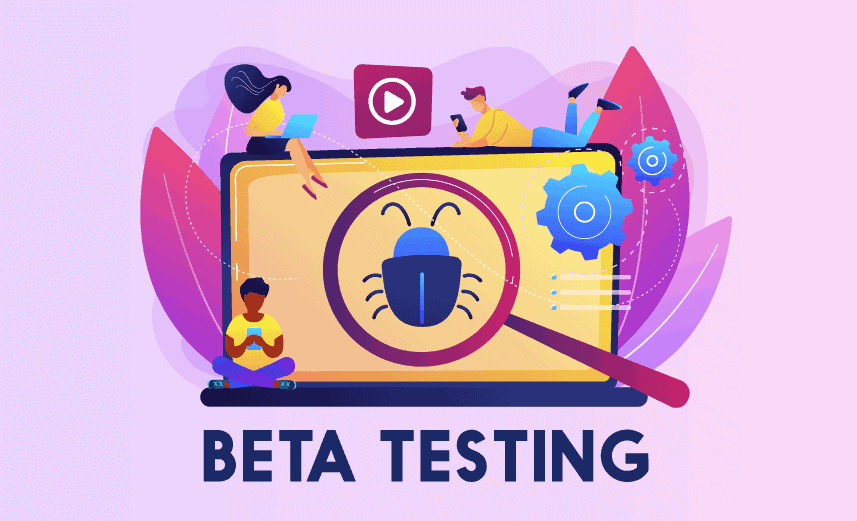Launching a new software product can be an exhilarating and rewarding experience. However, it requires careful planning and execution to ensure a successful software product launch. In this article, we will guide you through the step-by-step process of launching a software product, from conducting market research to customer onboarding. Whether you’re a seasoned entrepreneur or a first-time product manager, this comprehensive guide will provide valuable insights to help you navigate the complex journey of launching a new software product.
What Is Software Product Launch?
A software product launch is when a company introduces a new software product to the market. During this process, the company actively promotes and releases the software to potential customers. This includes activities such as marketing campaigns, demonstrations, and making the software available for purchase or download. The goal of a software product launch is to generate excitement and awareness among customers, driving adoption and usage of the software.

7 Steps to Successfully Launch Your New Software Product
Step 1: Market Research and Validation
Before diving into the development process, it is crucial to conduct thorough market research and validate the need for your software product. By understanding your target market and audience, you can tailor your product to meet their specific needs. Start by identifying your target market and analyzing your competitors. What are their strengths and weaknesses? What unique value can your product offer? Conduct surveys and interviews with potential users to gather insights and validate the demand for your software product.
Here’s a more detailed explanation of each step:
1. Identify your target market:
Begin by defining the specific group of people or businesses that your software product aims to serve. Consider factors such as demographics (age, gender, location), industry or niche, and any other relevant characteristics. This step helps you narrow down your focus and tailor your product to meet the needs of your target market.
2. Analyze competitors:
Study your competitors to understand their strengths and weaknesses. This analysis can help you identify gaps or opportunities in the market that your product can address. Look at their pricing models, features, user experience, marketing strategies, and customer feedback. By understanding what your competitors are doing well and where they fall short, you can differentiate your product and offer unique value.
3. Unique value proposition:
Based on your analysis of the market and competitors, determine the unique value that your software product can offer. This could be a feature that no competitor has, a more user-friendly interface, better performance, superior customer support, or any other aspect that sets your product apart. Your unique value proposition should address the pain points or challenges faced by your target market and provide a compelling reason for them to choose your product over competitors.
4. Surveys and interviews:
To validate the demand for your software product, engage with potential users through surveys and interviews. Develop questionnaires that gather insights into their needs, preferences, and pain points. Conduct one-on-one interviews to gain a deeper understanding of their challenges and how your product can solve them. This primary research will help you validate your assumptions, identify potential features or improvements, and gather feedback to refine your product.
5. Data analysis:
Analyze the data collected from surveys and interviews to identify trends, patterns, and common themes. Look for recurring pain points or desires expressed by potential users. This data-driven analysis will provide valuable insights to guide your product development decisions.
By conducting thorough market research and validation, you can minimize the risk of building a product that has little demand or fails to meet the needs of your target market. It allows you to understand your customers better, develop a product that resonates with them, and position yourself effectively in the market.
Step 2: Defining the Product
Once you have a clear understanding of your target market, it’s time to define your software product. It involves outlining the core features and functionality that your product will offer, creating user personas and use cases, and prioritizing features based on user needs and market demand.
Here’s a detailed explanation of each step:
1. Core features and functionality:
Start by listing the essential features and functionality that your software product will provide. These are the functionalities that directly address the needs and pain points of your target market. Consider what problems your product aims to solve and how it will provide value to users. Focus on the key features that will differentiate your product from competitors and attract users. However, it’s important to strike a balance and avoid feature overload, as simplicity and usability are also critical factors for success.
2. User personas:
User personas are fictional representations of your target audience, based on research and data about your actual users. Create detailed profiles that describe the characteristics, goals, behaviors, and pain points of different user types within your target market. By understanding the diverse needs and preferences of your users, you can design a product that caters to their specific requirements. User personas help you empathize with your users and make informed decisions throughout the product development process.
3. Use cases:
Use cases illustrate how different user personas interact with your software product to achieve specific goals or tasks. They provide detailed scenarios that describe the step-by-step process a user would go through while using your product. Use cases help you identify the critical user flows and functionality that your product needs to support. They also help uncover any potential usability or workflow issues that need to be addressed during development.
4. Prioritizing features:
Once you have a clear understanding of your target market, user personas, and use cases, prioritize the features based on user needs and market demand. Identify the must-have features that are essential for the core functionality of your product and align with the pain points of your users. Additionally, consider the features that differentiate your product and provide a unique value proposition. Prioritization helps you make informed decisions about resource allocation and development timelines.
During the process of defining your software product, it’s important to continuously refer back to your market research and validation findings. This ensures that you’re building a product that solves real problems for your target market and meets their needs effectively. Regularly review and refine your product definition as you gather more insights from user feedback, market trends, and evolving customer demands.
Step 3: Building the Product
3.1 Technology Stack Selection
Selecting the right technology stack is crucial for the success of your software product. Evaluate different technology options based on factors such as scalability, security, and compatibility. Choose programming languages and frameworks that align with your product’s requirements and development team’s expertise. Consider future scalability and flexibility when making these decisions.
3.2 Agile Development Process
Implementing an agile development methodology is essential to ensure a smooth and efficient development process. Break down the development into sprints and iterations, allowing for continuous feedback and improvement. Collaborate closely with the development team and stakeholders, fostering effective communication and transparency. Regularly conduct testing and quality assurance to catch any bugs or issues early in the development cycle.
3.3 User Interface and User Experience (UI/UX)
Designing an intuitive and visually appealing user interface is crucial for user satisfaction. Invest time and effort into creating a seamless user experience that aligns with your target audience’s preferences. Conduct usability testing to gather feedback and make iterative improvements to the UI/UX. Pay attention to the smallest details, as they can greatly impact the overall user experience.
Step 4: Beta Testing and Feedback
Before launching your software product to a wider audience, it’s essential to conduct beta testing. Identify beta testers from your target audience who are willing to provide feedback. Also, you need to the best way to recruit and engage beta testers for successful beta testing. Clearly communicate the objectives and expectations of the beta testing phase. Encourage testers to report any bugs or issues they encounter and gather their feedback on the overall user experience. Use this feedback to make necessary improvements and polish your product before the official launch.

Here’s a more detailed explanation of the software beta testing process:
1. Identify beta testers:
Select beta testers who represent your target audience. These individuals should be willing to actively engage with the product, provide feedback, and report any issues they encounter. Consider reaching out to existing customers, industry experts, or individuals who have expressed interest in testing your product. The goal is to have a diverse group of testers who can provide valuable perspectives and insights.
2. Communicate objectives and expectations:
Clearly communicate the objectives, expectations, and duration of the beta testing phase to your testers. Provide them with guidelines on how to test the product, what aspects to focus on, and how to provide feedback. Set clear expectations regarding the level of involvement and frequency of reporting issues or feedback. This clarity ensures that testers understand their role and can provide feedback that aligns with your goals.
3. Gather feedback and bug reports:
Encourage beta testers to thoroughly test the product and report any bugs, glitches, or usability issues they encounter. Set up a feedback mechanism such as a dedicated email address, an online form, or a bug-tracking system to streamline the collection of feedback. Encourage testers to provide specific details about the issue, steps to reproduce it, and any supporting information that can help your development team diagnose and address the problem.
4. Collect user experience feedback:
In addition to bug reports, gather feedback on the overall user experience. Ask testers about their impressions, the ease of use, and any suggestions for improvement. This feedback can help you identify areas where the user experience can be enhanced, uncover missing features, or validate the effectiveness of existing functionalities. Pay attention to recurring feedback or patterns, as they often indicate areas that need attention.
5. Address issues and make improvements:
Analyze the feedback received from beta testers and prioritize the identified issues and suggestions. Work closely with your development team to address the reported bugs, fix usability issues, and incorporate the feedback into the product. Use this phase as an opportunity to polish and refine your product, ensuring that it meets the expectations and needs of your target audience.
6. Iterate and repeat:
After making the necessary improvements based on beta testing feedback, consider conducting additional rounds of beta testing if needed. This iterative process allows you to gather feedback from different sets of users and validate the effectiveness of your improvements. By incorporating user feedback and making iterative refinements, you can enhance the quality and usability of your software product before the official launch.
As we know that beta testing is crucial you need to know the best Beta Testing practices for SaaS (software as a service)products.
Beta testing provides invaluable insights into the strengths and weaknesses of your software product. It allows you to uncover bugs, assess usability, and gain feedback on the overall user experience. By leveraging the feedback and addressing issues during the beta testing phase, you can ensure that your product is well-prepared for a successful launch to a broader audience.
For Software beta testing you can find many online platforms. For Example, BufferApps is a SaaS launch platform, where you launch your product to get your product tested. BufferApps is one of the most recommended platforms for beta launch. It provides more exposure, real user feedback, gains more eyeballs, early adopters and customers for your SaaS products.

Step 5: Marketing and Promotion
Marketing and promotion play a vital role in creating awareness and generating excitement for your software product. Follow these key steps to effectively market your product:
5.1 Branding and Positioning
Create a strong and memorable brand identity that resonates with your target audience. Craft a compelling brand story and message that communicates the unique value of your product. Position your product in the market to differentiate it from competitors and highlight its key benefits.
5.2 Content Creation
Develop engaging and informative content to educate and attract potential customers. Create a content marketing strategy and an editorial calendar to ensure consistent delivery of valuable content. Utilize blog posts, videos, and social media platforms to share industry insights, product updates, and user success stories.
5.3 Digital Marketing and Advertising
Implement search engine optimization (SEO) techniques to improve your product’s visibility in search engine results. Run targeted online ads and pay-per-click (PPC) campaigns to reach your target audience effectively. Leverage social media platforms to build a community around your product, engage with potential customers, and encourage sharing.
Step 6: Product Launch and Customer Onboarding
With your product developed, tested, and marketed, it’s time for the official launch. Follow these steps to ensure a successful product launch and a seamless customer & beta users onboarding experience:
1. Set a launch date:
Choose a specific date for your product launch and ensure that all teams involved are aligned on the timeline. Consider factors such as market readiness, completion of development and testing, and any other dependencies. Setting a launch date creates a sense of urgency and provides a clear target for your team to work towards.
2. Coordinate launch activities:
Plan and coordinate all activities related to the product launch. This includes marketing efforts such as social media campaigns, email marketing, content creation, and advertising. Also, consider PR activities like press releases, media outreach, and influencer partnerships. Ensure that all marketing materials and messaging are aligned with your target audience and convey the unique value proposition of your product.
3. Generate buzz and excitement:
Prior to the launch, build anticipation and generate buzz around your product. Release teasers, sneak peeks, or previews to create excitement among your target audience. Leverage social media platforms, industry forums, and other relevant channels to engage with your audience and build anticipation for the launch. This can help generate early interest and attract potential customers. To know in detail about the Best Way To Create Buzz For Your SaaS Beta Launch Click Here.
4. Provide documentation and tutorials:
Develop user-friendly documentation, tutorials, and guides that assist new customers in onboarding and using your product effectively. This includes providing clear instructions on how to set up the product, access key features, and troubleshoot common issues. Consider different learning styles and provide a variety of resources such as written documentation, video tutorials, and interactive demos. Make sure that the onboarding process is intuitive and seamless, reducing any friction that may deter new customers.
5. Support and address user concerns:
During the onboarding process, be attentive to user concerns and questions. Set up channels for customer support, such as email, live chat, or a dedicated support portal, where users can reach out for assistance. Monitor these channels regularly and promptly respond to customer inquiries. Address any issues or challenges that users may encounter during the onboarding process. This level of support and responsiveness will help create a positive first impression and foster customer satisfaction.
6. Continuous improvement:
Actively collect user feedback during the onboarding process and beyond. Gather insights through surveys, user interviews, and analytics to identify areas for improvement. Use this feedback to refine your onboarding experience and iterate on your product. Continuously enhancing the onboarding process and addressing user concerns will contribute to a better overall user experience and higher customer satisfaction.
Remember that a successful product launch and smooth customer onboarding experience are critical for building a loyal customer base and driving long-term success. By carefully planning and executing these steps, you can maximize the impact of your product launch and ensure that new customers have a positive first impression of your software product.
Step 7: Gathering and Analyzing Metrics
After the launch, it’s crucial to track and analyze key metrics to evaluate the success of your software product. It involves implementing analytics tools, tracking user behavior and engagement, and measuring key performance indicators (KPIs). Here’s a more detailed explanation of each step:
1. Implement analytics tools:
Set up analytics tools such as Google Analytics, Mixpanel, or custom tracking systems to gather relevant data about user behavior, usage patterns, and engagement with your software product. These tools allow you to track metrics such as the number of visitors, user demographics, user flow, feature usage, session duration, and conversion rates. Implementing analytics tools is crucial for collecting the data necessary to evaluate the performance of your product.
2. Track user behavior and engagement:
Once the analytics tools are in place, start tracking and monitoring user behaviour and engagement. Pay attention to how users interact with your product, which features they use the most, how often they return, and their overall engagement level. Understanding user behavior and engagement helps you identify what aspects of your product are resonating with users and what areas may need improvement.
3. Measure key performance indicators (KPIs):
Define and track key performance indicators (KPIs) that align with your business goals. These KPIs will vary depending on the nature of your software product but may include metrics such as:
- User acquisition: Measure the number of new users who sign up or install your product. Track the effectiveness of your marketing efforts and identify channels that bring in the most valuable users.
- User retention: Monitor user retention rates to understand how many users continue to use your product over time. Identify factors that contribute to user churn and implement strategies to improve user retention.
- Engagement metrics: Measure user engagement through metrics such as active users, session duration, feature usage, and conversion rates. Assess how users are engaging with your product and identify opportunities to enhance their experience.
- Revenue generation: If your software product has a revenue model, track metrics related to revenue generation, such as average revenue per user (ARPU), conversion rates, or customer lifetime value (CLTV). These metrics help evaluate the financial success of your product and guide strategies for monetization.
4. Analyze the data:
Once you have collected the relevant data, analyze it to gain insights and identify areas for improvement. Look for patterns, trends, and correlations within the data. Identify what is working well and what can be optimized or enhanced. Use the data to inform product decisions, prioritize feature development, and enhance the overall user experience.
5. Iterative improvements:
Use the insights gained from data analysis to make iterative improvements to your software product. Implement changes based on the identified areas for improvement and measure the impact of those changes through ongoing tracking and analysis. Continuously monitor the metrics and refine your strategies to optimize user engagement, retention, and revenue generation.
By gathering and analyzing metrics, you can gain valuable insights into the performance and success of your software product. Data-driven decision-making allows you to make informed improvements, enhance the user experience, and drive the long-term success of your product.
Conclusion – New Software Product Launch
Launching a new software product requires careful planning, diligent execution, and continuous improvement. By following the step-by-step process outlined in this article, you can increase your chances of a successful launch. Remember to conduct thorough market research, define your product’s core features, build it using an agile development process, gather feedback through beta testing, and market it effectively. With a well-executed launch and a focus on customer satisfaction, you can pave the way for the success of your software product.
FAQs – Software Product Launch
The most important part of a product launch is capturing the attention and interest of the target audience. It involves creating a compelling value proposition, effectively communicating the product’s benefits, and generating excitement and anticipation. By captivating the audience, you lay the foundation for the successful adoption and sales of the product.
To launch your software product online it is important to follow step by step guide for your product’s launch. The above mention 7 Steps will help you to Successfully Launch Your New Software Product online.
The success factors of a product launch include are Clear value proposition, Targeted marketing, Timing, , Strong market research, Effective communication, Customer feedback and iteration, Scalable infrastructure, Competitive differentiation, and Ongoing support.

